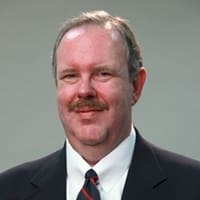It feels very different in an ocean when you are in front of a wave instead of beneath a wave or behind one. As waves recede, they dissipate energy because they have served their purpose. For several years, I have been predicting what is now taking place in the market. The merger of professional services for permanent and contingent labor is really happening, and like that wave, it is building energy as it approaches.
Okay, I know you are now saying: Enough with the metaphors, what do you actually mean? What I am saying is RPO and MSP are merging into one platform that HRO Today has dubbed the total workforce solution (see The Emergence of Total Workforce Solutions on page 12).
This is not a phenomenon, a fad, or even a trend. It is simply an evolution of the product offerings. The RPO platform addresses many of the needs of permanent hiring. However, in many countries -and increasingly, in the U.S. -the benefits are portable and contingent labor and independent contracting are on the rise. In the U.S., the market purchases MSP services that generate efficiencies and management over contingent labor supply procurement. This product is evolving, but there are some limitations due to “co-employment” exposures that date back to the 1997 Vizaino vs. Microsoft decision by the Ninth Federal Circuit. Obviously, judges don’t understand how the real world works or they would have done a better job allowing management to, umm, what do you call that again? Oh, yeah, manage.
In a world where as many as one in five employees is considered non-permanent, organizations need to be able to motivate productivity and alignment to mission. This needs to be done while classifying correctly. In addition, focusing contingent labor practices on fewer, better providers allows for more certainty of compliance and more efficiency. But the question that has been bothering me for years is: Why these are two different things? Organizations have one workforce that is composed of diverse channels. Why don’t applicant tracking systems (ATS) simply ask for the status of a hire and if permanent is checked, one set of onboarding screens open, and if contingent is checked, another set of onboarding and billing screens open? This will be here sooner than you think.
It is incumbent on forward-thinking HR groups to see one workforce -not employees and “those other people.” Fortunately, many HR leaders already do see the convergence and there is a proliferation of new total workforce solutions being executed.
To advance this effort, HRO Today will hold its first-ever Baker’s Dozen ranking of total workforce solutions providers in the October issue. Since this is a new service model, we are not asking for as large a sample (only five) as we do for more established product lines (between 10 and 13); however, we will raise the sample requirement over the next several years as the market for this service grows.
The reason for this Baker’s Dozen is two-fold to benefit our practitioner audience. The first is that the total workforce solution design is immeasurably complex. The consulting aspect of being able to offer insight, planning, and support into assessing what component of the workforce should be permanent versus contingent requires real wisdom, and the execution of a properly designed program is highly complex. We already see many companies claiming to do this, and we are, frankly, skeptical of some of them. This Baker’s Dozen will be feedback from “real users” about “real providers.” The second is that many HR leaders need to see the market’s breadth to convince reticent line management to try new approaches. I know of one CHRO who convinced her CEO, but it took more than two years and quite a bit of data about where it had already been tried and succeeded.
We are excited at the evolution of the market and to have acknowledged its coming and continuing to be part of the effort to explore the new approaches to HR.












